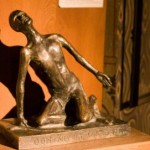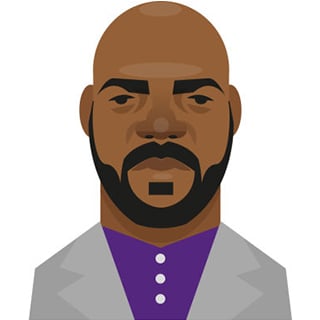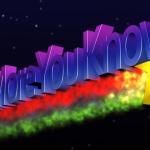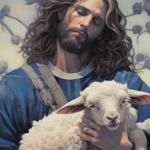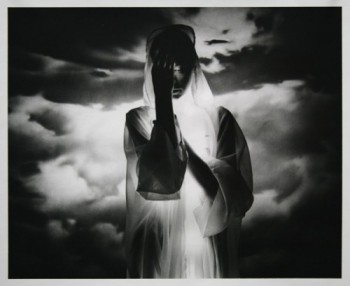 Sabbath. The seventh day alone is not enough to bring Sabbath to us. Sabbath arrives by the Presence of God, the Indwelling Spirit. In Hebrew, her name is Shekhina, a feminine blessing who enters as the presence of God into the midst of the faithful. She is often called the Sabbath Bride, coming into the homes of the faithful at evening, and filling hearts with her presence through the Sabbath day.
Sabbath. The seventh day alone is not enough to bring Sabbath to us. Sabbath arrives by the Presence of God, the Indwelling Spirit. In Hebrew, her name is Shekhina, a feminine blessing who enters as the presence of God into the midst of the faithful. She is often called the Sabbath Bride, coming into the homes of the faithful at evening, and filling hearts with her presence through the Sabbath day.
Shekhina is understood as the transformational spirit of God, the source of prophecy. And the Spirit of the Lord will come upon thee, is a prelude to most prophetic visions and mysticism, and for Christians, these words are prelude to the Annunciation and Pentecost. The Shekhina is also Wisdom, the feminine Presence of God.
There is much mysticism about Shekhina in Judaism: it is said that she enters Jerusalem through the Beautiful Gate. It is said that the Messiah will enter through that very gate with her. This is the gate tradition says Jesus used to enter the city on Palm Sunday. This gate has been walled up for nearly a thousand years, and was walled up for fear those sayings might be true.
Still, Shekhina comes into this world. She comes all around the world, to tables with lit candles where Sabbath bread is blessed by women bending over it. She comes to the pure of heart and the prayerful, to the humble and the weeping. She comes to the Wailing Wall in Jerusalem, and to places of weeping anywhere.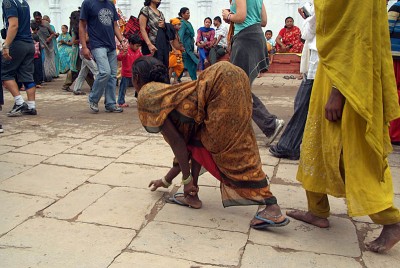
Leonard Nimoy, known to most of us as Star Trek’s Spock, was raised an Orthodox Jew, and wrote a book about her – Shekhina – in 2002. In it he wrote: A feminine word in Hebrew, Shekhina is the Talmudic term for the visible and audible manifestations of the Deity’s presence on Earth. Over time, Shekhina came to represent much more — a softer, empathetic feminine counterpart to God, who could argue for humanity’s sake, comfort the poor and sick, and stand as the mother of Israel.
Luke wrote this story: Jesus was preaching in a synagogue. A woman so bent-over she could not stand up appeared. Everyone knew she had been like this for eighteen years, and everyone knew it was a Spirit that was bending her so. Jesus freed her. And an argument began. Was he breaking Sabbath by doing this work? Sabbath is kept as a day of rest. Jesus argued he was doing Sabbath, being Sabbath. He pointed out that those who were there would not hesitate to help their animals, if they were cruelly burdened on the Sabbath. How could they not help her?
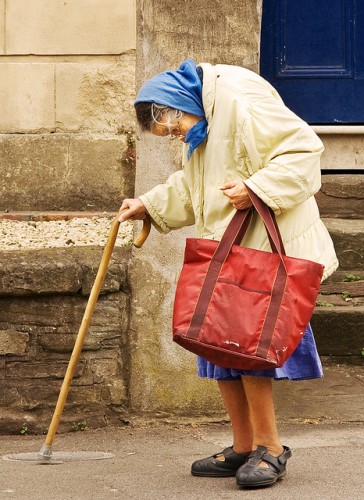 In Luke’s tale she has no name, this woman whom Jesus unburdens and sets free, but isn’t she Shekhina? An ordinary woman, yes, for God is always among us as an ordinary being. But isn’t she also the presence of God, burdened and bent? By what is she bent? Perhaps she is bent by occupation of Israel – has it been 18 years that Pilate has been in Jerusalem when Jesus preaches this day? Perhaps she is bent by the flagging hope of the prayerful. Perhaps by the limited spiritual vision of the leaders of this time. Perhaps by secret sins.
In Luke’s tale she has no name, this woman whom Jesus unburdens and sets free, but isn’t she Shekhina? An ordinary woman, yes, for God is always among us as an ordinary being. But isn’t she also the presence of God, burdened and bent? By what is she bent? Perhaps she is bent by occupation of Israel – has it been 18 years that Pilate has been in Jerusalem when Jesus preaches this day? Perhaps she is bent by the flagging hope of the prayerful. Perhaps by the limited spiritual vision of the leaders of this time. Perhaps by secret sins.
In Jewish commentaries, sins that keep the Shekinah away are listed, as well as pieties that bring her near. The minyan (10 men praying in the synagogue) brings her near, it is written. And among the sins that drive her off: the shedding of blood, idolatry, and whoever sins in secret or walks with a proud and haughty bearing crowds out the feet of the Shekhina.
Jesus spends much of his ministry setting the Sabbath free. He stretches the spirits of the people to make room for the possibility that Sabbath is more than dull repetition of mindless prayers. He stretches the hope of the people to imagine what they have never seen. He stretches the health of the people so that they may mount up on wings like eagles, may run and not be afraid. And many are alarmed. Fear of falling has made them more careful than watchful, more careful that eager, more careful than adventuresome. He calls them hypocrites, for preaching what they will not practice, teaching what they do not believe.
In our 21st century, we live out this ritual argument Sunday by Sunday. The faithful and many pastors, too, rise up against new music, new prayers, new furniture, new images of God, as woman, as poor, as creatures, as water and trees pleading. And especially hard to present on Sunday is the recognition of too much pain. Pain, the indignity of those bent over by injustice (like those living in new forms of family) is unwelcome by those who, on Sabbath, expect to be cheered up. Inured to the sight of the bent and the broken, many churchgoers have come to consider this acceptable. Yet the most ancient of commentaries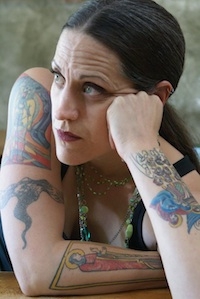 about Sabbath make it clear that we bring the Presence of God to us by our Welcome, our Hope, and our Help. And for Christians, the wounded body is the ever-aching Divine appeal to faithful hearts.
about Sabbath make it clear that we bring the Presence of God to us by our Welcome, our Hope, and our Help. And for Christians, the wounded body is the ever-aching Divine appeal to faithful hearts.
On Sunday morning, many who are not in church will hear Krista Tippett of NPR interview Rev. Nadia Bolz-Weber, a Lutheran pastor in Colorado, whom some call the Tattoed Lady. Her arms and neck are covered with tats, and she wears her hair in a faux-hawk do. She has started a church called Church for All Sinners and Saints, which is now attended by hundreds who would never enter a traditional church, who look more like her than like church-folks, who have no tolerance for sedate middle class ways. Asked about her appearance on NPR, Rev. Bolz-Weber said, The places I hang out in Denver, in some ways, I look like a soccer mom. In the Sabbath debate, she is standing with Jesus. And she is standing upright, in her full stature, as a bringer of Sabbath in this world, as Shekhina.
____________________________________________________
Illustrations
1. Shekhina. Photo by Lenoard Nimoy, 2002, in his book, Shekhina. Vanderbilt Divinity School Library, Art in the Christian Tradition.
2. Crippled Woman. Jai Gatri, India. Google images.
3. Bent Over Woman. Google images.
4. Rev. Nadia Bolz-Weber, who now has more tats and a hawk hairdo. Sojurners Magazine, her own page image, blog on 2/5/14.








